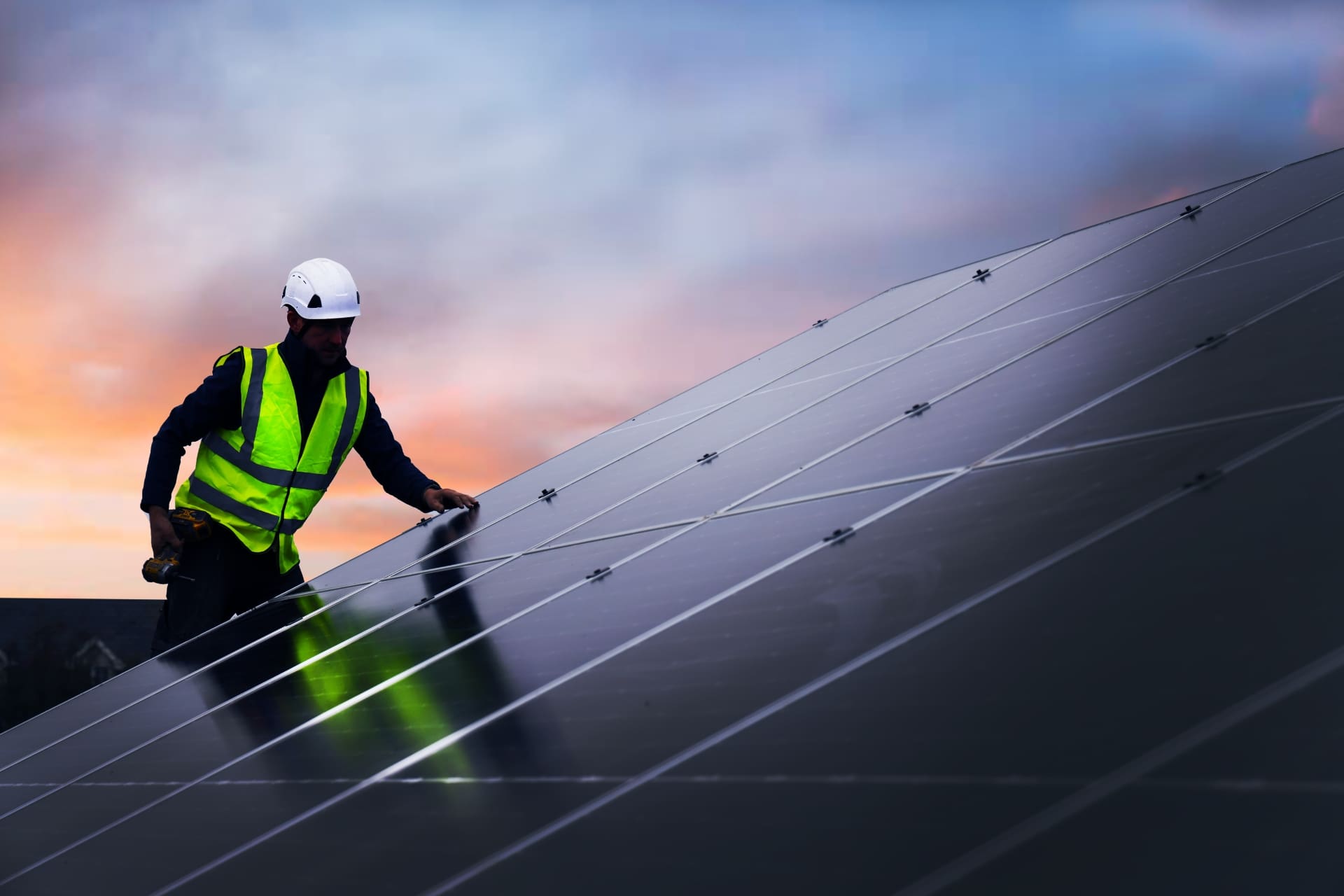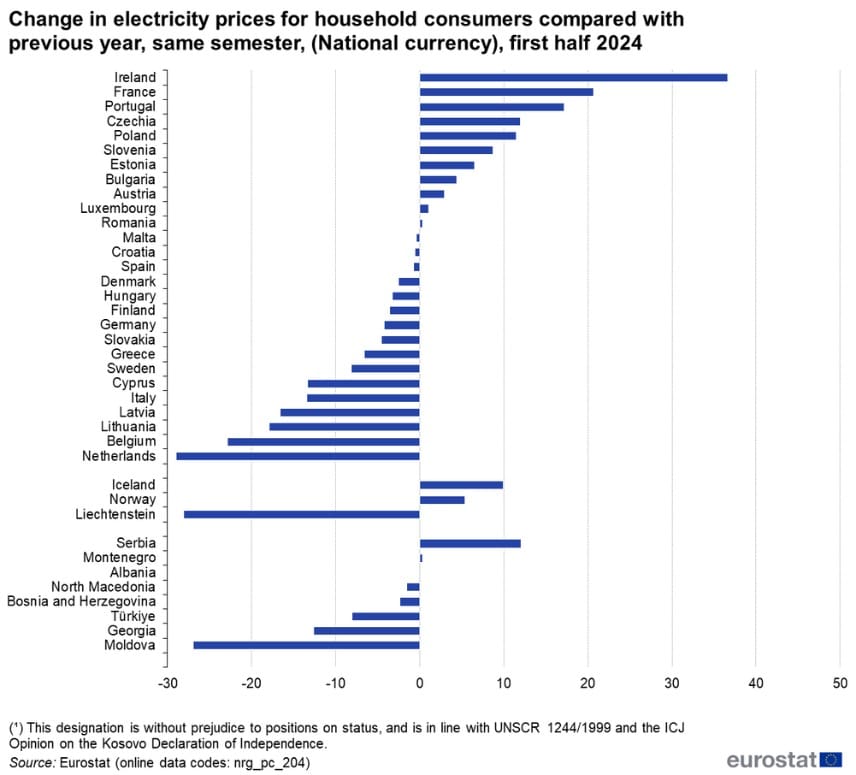
“It’s too cloudy”, “We don’t get enough sun”, “They’re not worth it in Ireland.”
You’ve probably heard it and even thought it.
I did. And I told others exactly the same.
But that was years ago.
It’s now 2025 and, due to all the developments in recent years, it’s time to reassess solar panels.
Key takeaways:

In short, modern solar panels can now save you thousands of Euro while also reducing your carbon footprint.
Modern efficient solar panels typically pay for themselves within 5-7 years in Ireland and can have guaranteed lifespans of 25 to 30 years.
But there’s more to it. So let’s get into more detail.
Modern solar panels and system technology have advanced significantly. Today’s panels are much more efficient than a decade ago. They now reliably generate power even in low-light conditions. And they do this for decades.
The best solar panels come with a 25 year product warranty and 30 year performance warranty, guaranteeing long lifespans and high efficiency. The power output warranty of these solar PV panels is nearly 90% after 25 years and over 87% after 30 years.
Ireland has the highest electricity prices in the EU, before tax is applied.
After tax, Ireland is the second most expensive in the EU according to Eurostat.
The residential electricity price in Ireland is nearly 30% higher than the EU average.
And our costs have risen the quickest year on year.
From the first half of 2023 to the first half of 2024, our residential electricity costs increased by 36.6%.
The second largest price increase in the EU was significantly lower at 20.7%, experienced by France.

However, Irish residents that installed solar panels were protected from this dramatic increase.
And those that reached their payback period are generating their own electricity effectively for free.
If you generate more electricity than you consume, you can export the excess energy back to the grid.
If appropriately set up (e.g., on a feed-in tariff), you get paid for this excess energy in the form of account credit from your electricity provider.
The rate paid by utility companies vary. You can expect to earn 15 to 25 cents per kWh exported back to the grid. Annually, this can work out to €40-€400 depending on system size, rate, household consumption, etc.
It’s common for excess electricity to be generated during summer months. The account credit earned will then offset electricity bills during winter months, when generation is lower.
Solar panels work in the gloomy and windy Irish climate.
Modern solar panels don’t need direct sunlight to work. The improvements in operation and efficiency mean they generate electricity even during cloudy and rainy days.
Using actual meteorological data, specifically EU irradiance data, 10 solar panels in Dublin generate an estimated 3,890.04 kWh of electricity per year (the average Irish household consumes 4,200 kWh p/y).
This takes into account solar radiation, temperature, wind speed and many other factors, specifically for Co. Dublin.
An Ohk energy customer in Dublin estimates their savings will be €70,000 over 25 years.
In addition to sunlight, solar panel wind tolerance is another important factor to consider in Ireland.
Our TW Solar Panels, have a wind tolerance of 2,400Pa, which is equivalent to approx. 140mph / 225km/h winds.
In other words, and to add perspective, modern solar panels can tolerate Category 4 hurricane wind speeds.
Modern solar panels can also operate in extreme temperatures. The panels we install have an operational temperature of -40℃~+85℃. More than sufficient for the Irish climate.
Solar panels lower your carbon footprint substantially.
They deliver clean energy for decades.
For example, 10 solar panels in Mayo (specifically a 4kWp system), generate an estimated 3,498.2 kWh of clean electricity, annually.
The kilowatt-hours avoided is equivalent to the carbon sequestered by 2.4 acres of forest in one year.
If every house in Mayo generated electricity from a 4kWp solar system, the annual carbon sequestered would be equivalent to:
And the total savings on electricity bills for residents would be close to €84.3 million per year.
This is based on the average price per kWh for Irish households in late 2023 according to seai.ie, the total number of houses (excl. apartments) in Co. Mayo according to cso.ie., and the estimated power output from solar panels in Mayo noted above.
To help achieve Ireland’s 2030 climate targets, as part of EU-wide objectives, the government has introduced a number of solar incentives and initiatives including:
These incentives and initiatives, combined with the other factors mentioned above, make solar a compelling and worthwhile investment in Ireland.
So how much do they cost?
Solar panel home installations have a typical starting price of around €6,500, after government incentives.
However, every home and household consumption is different. As a result, the cost of installing solar panels vary widely.
Get a quote for installing solar panels.
Many factors impact the cost of installing solar including:
As you’d expect, solar panel installations that are larger and more complex have higher costs.
Ultimately, you can save around 50% on your electricity bills.
The actual savings value varies by household.
Your consumption, the price you pay per kWh, the size of the solar system and your local weather conditions are all key factors in determining how much you can save with solar panels.
If you live in Dublin, pay 43 cents per kWh, installed a 4kWp solar system you can expect to save between €1,467.90 and €1,738.33 annually.
This is the equivalent Euro value of the electricity you can expect to generate in Dublin.
Dublin residents can expect to generate 3,413.73 kWh to 4,042.62 kWh depending on specific location. This takes into account local weather data.
To see how much you can save from solar, to get your payback period and to see if solar is a worthwhile investment for you, book a free no-obligation solar consultation below.